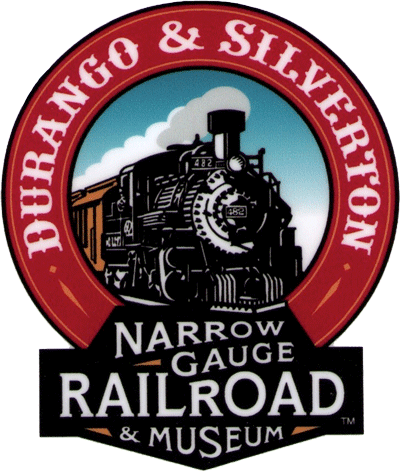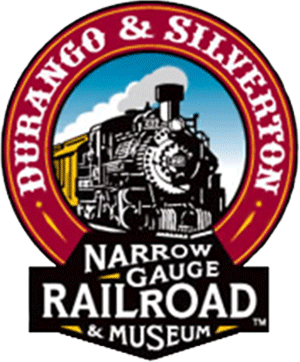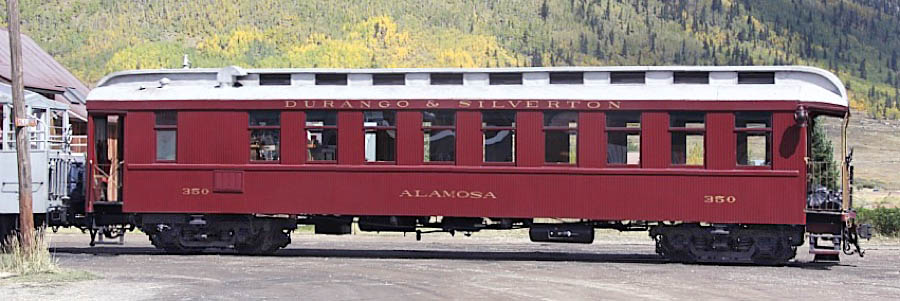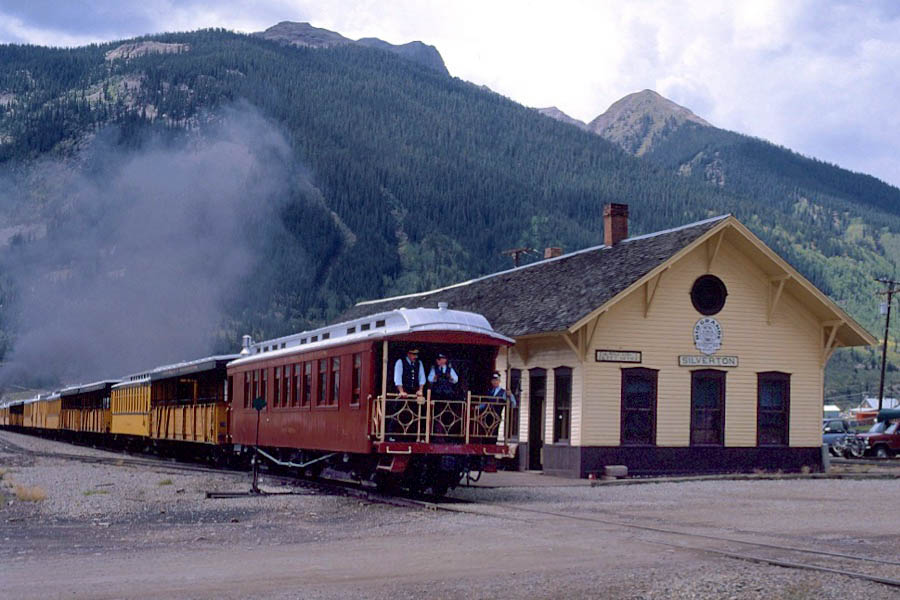 |
Durango & Silverton Narrow Gauge Rolling Stock Roster |

Durango, Co / May 2023 / RWH

collection

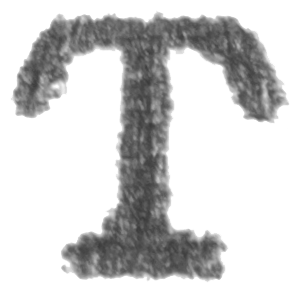 he cars used on the Silverton trains, although they all appear to be similar in external appearance, had long and varied careers in service on the Rio Grande. They were built at many different times by different builders and have undergone numerous and extensive rebuildings and renumberings. Some have survived train wrecks and fires in the past, and others were once converted to outfit (work) cars and then have been revived for passenger service. A few were idle for many years until rescued by the Durango & Silverton Narrow Gauge Railroad, extensively rebuilt in the new Durango carshop, and returned to service. The origins of some cars are obscure and difficult to determine.
he cars used on the Silverton trains, although they all appear to be similar in external appearance, had long and varied careers in service on the Rio Grande. They were built at many different times by different builders and have undergone numerous and extensive rebuildings and renumberings. Some have survived train wrecks and fires in the past, and others were once converted to outfit (work) cars and then have been revived for passenger service. A few were idle for many years until rescued by the Durango & Silverton Narrow Gauge Railroad, extensively rebuilt in the new Durango carshop, and returned to service. The origins of some cars are obscure and difficult to determine.
Doris B. Osterwald / Cinders & Smoke: A Guide to the D&SNRG / 1988
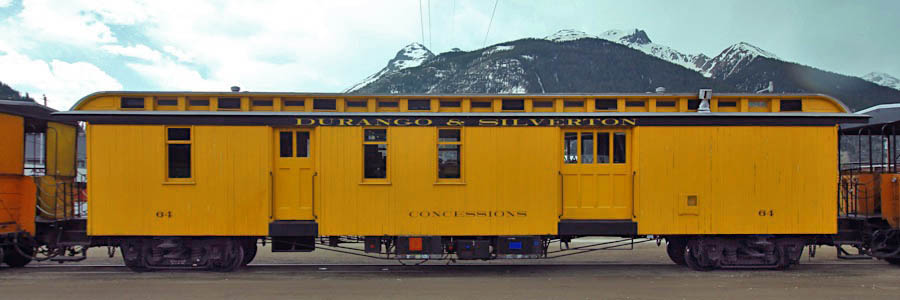
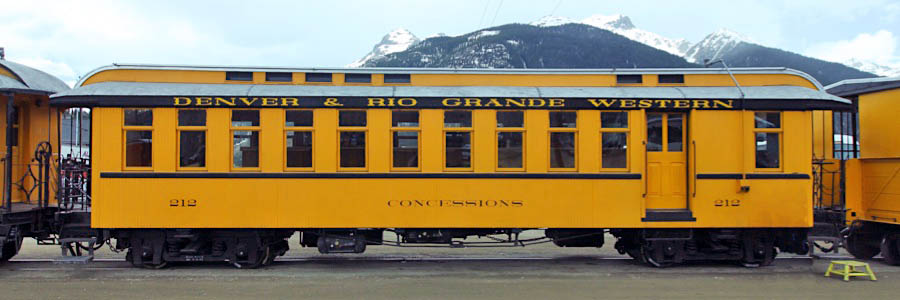
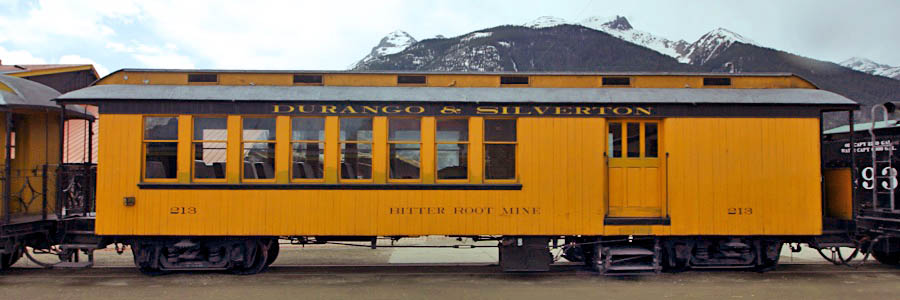


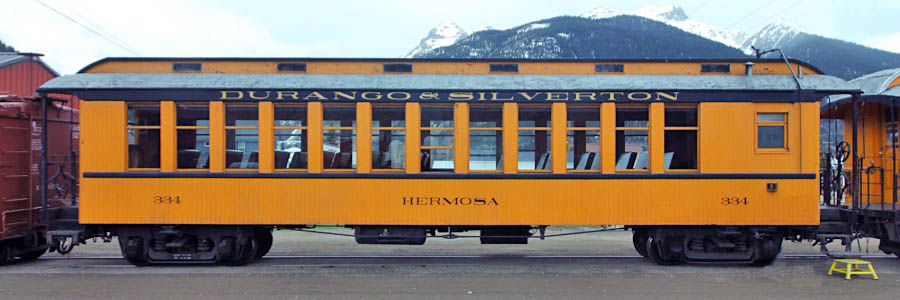
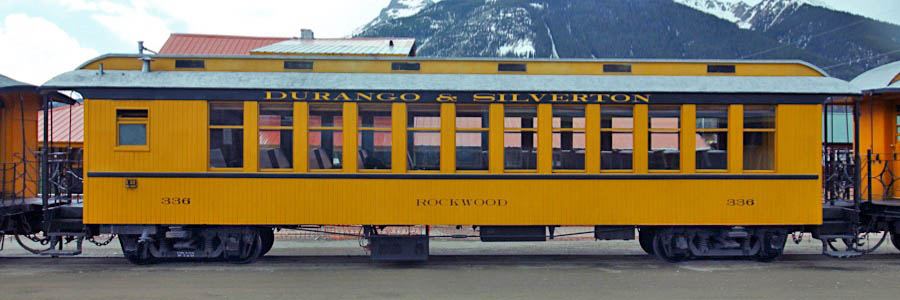

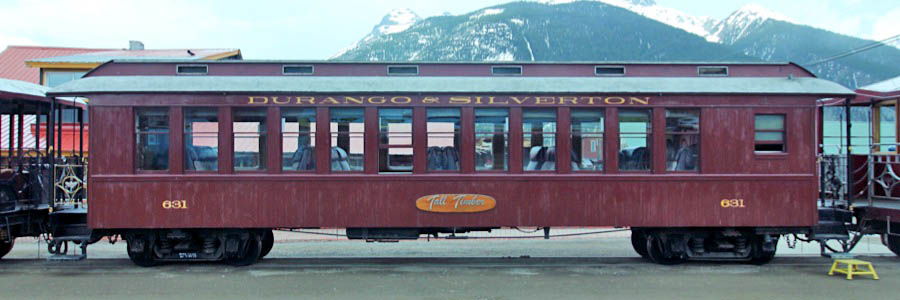
Silverton, Co / May 2023 / RWH

Check out ActionRoad.net to see an excellent overview of the DSNG passenger car fleet
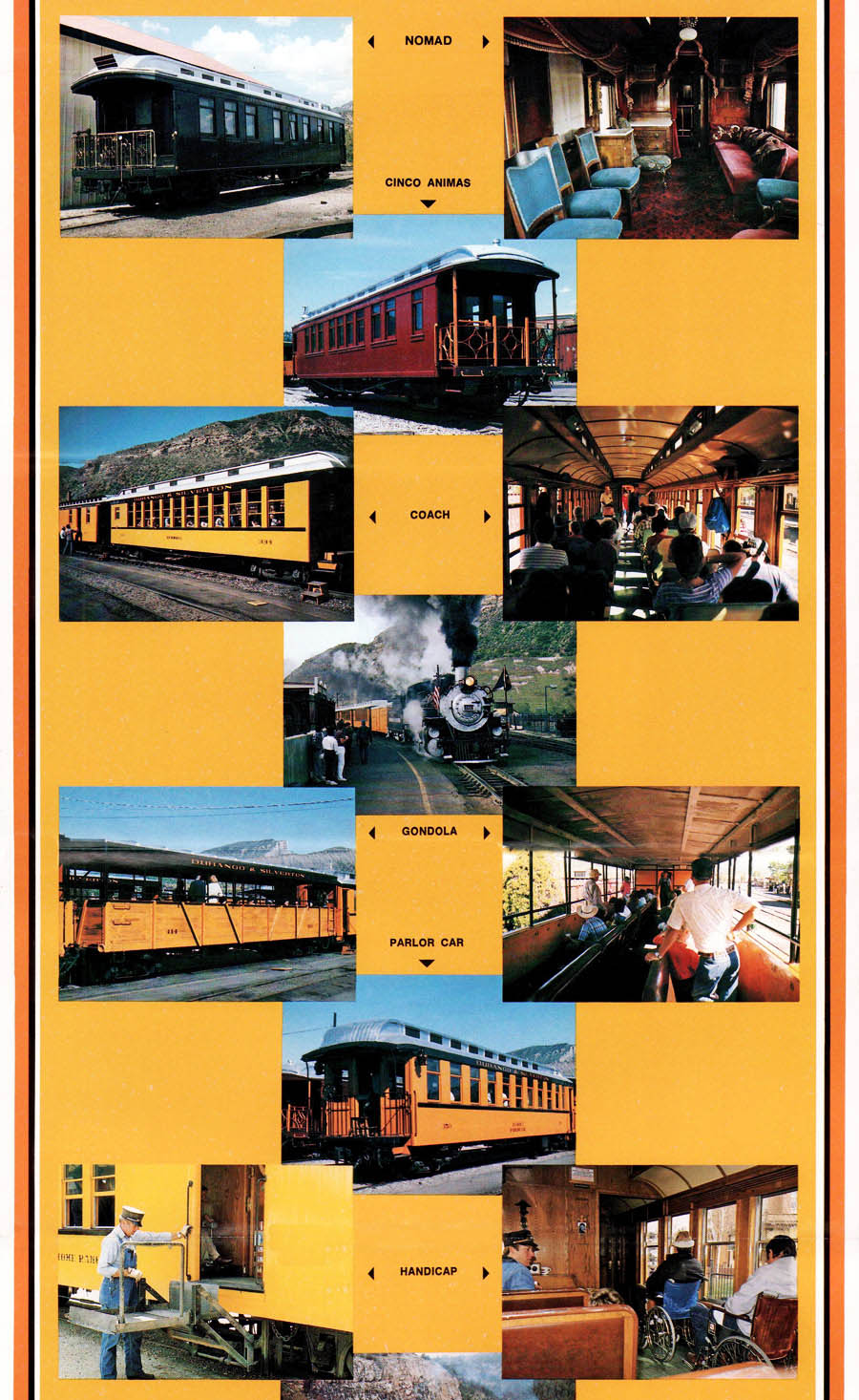
1990 brochure / collection
Concession Cars
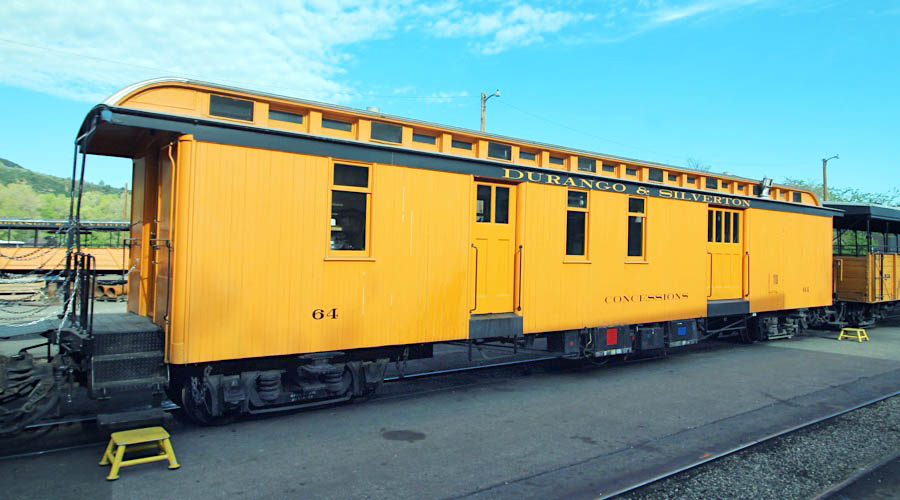
Durango & Silverton #64
Durango, Co / May 2023 / RWH

Durango, Co / May 2023 / RWH

Silverton, Co / May 2023 / RWH
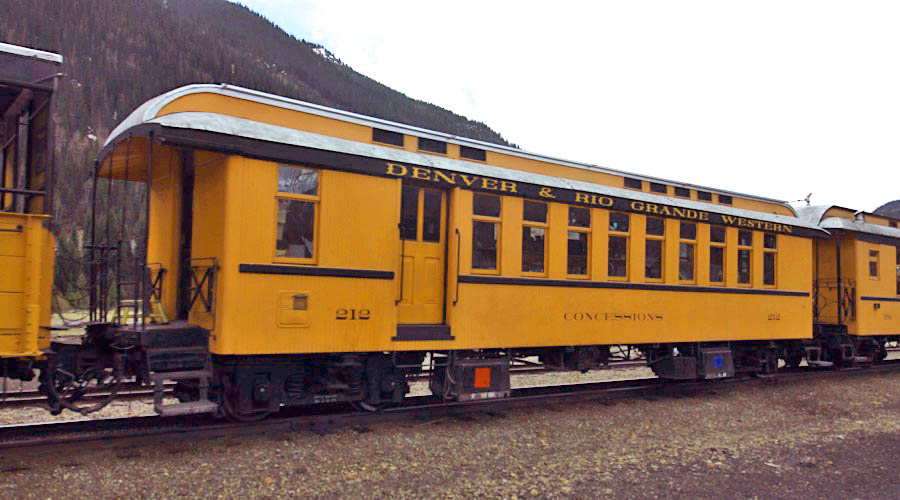
Durango & Silverton #212
Silverton, Co / May 2023 / RWH
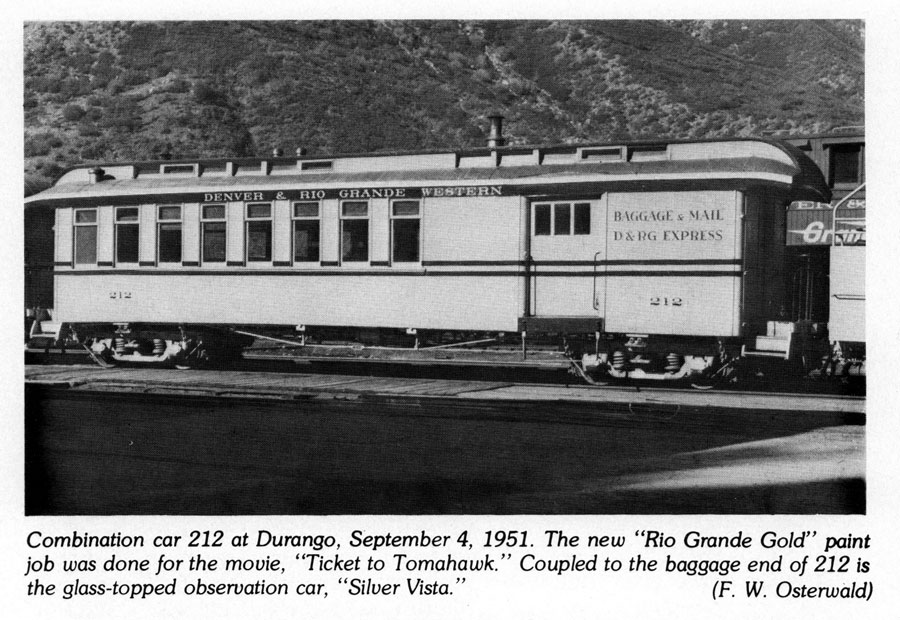
from Cinders & Smoke: A Guide to the D&SNRG
by Doris Osterwald - 1986 / collection

Silverton, Co / May 2023 / RWH
 Then and Now
Then and Now
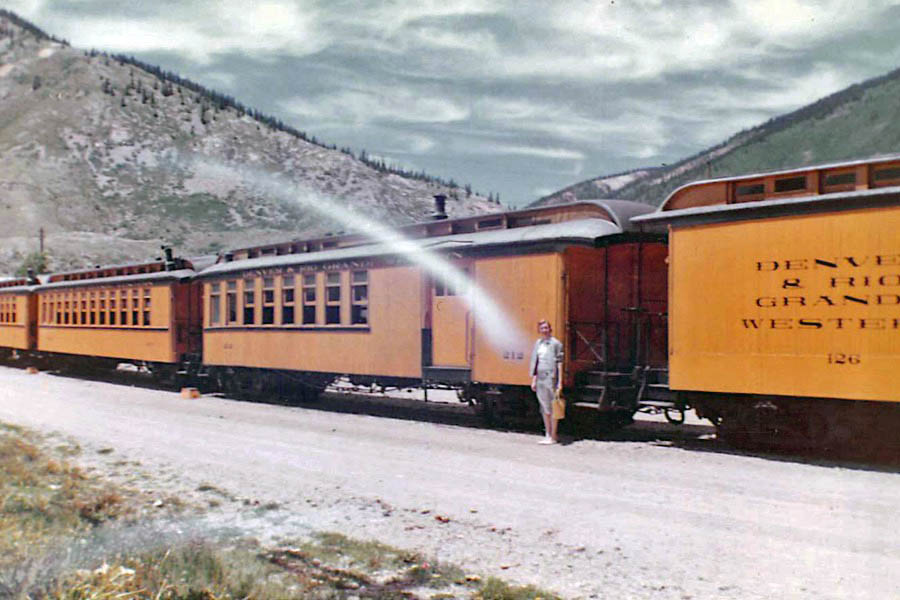

Silverton, Co / Jun 1959 and May 2023 / JCH and RWH
Coaches

Durango & Silverton #213
"Bitter Root Mine"
accessible coach / Durango, Co / May 2023 / RWH

Durango, Co / May 2023 / RWH

Silverton, Co / May 2023 / RWH
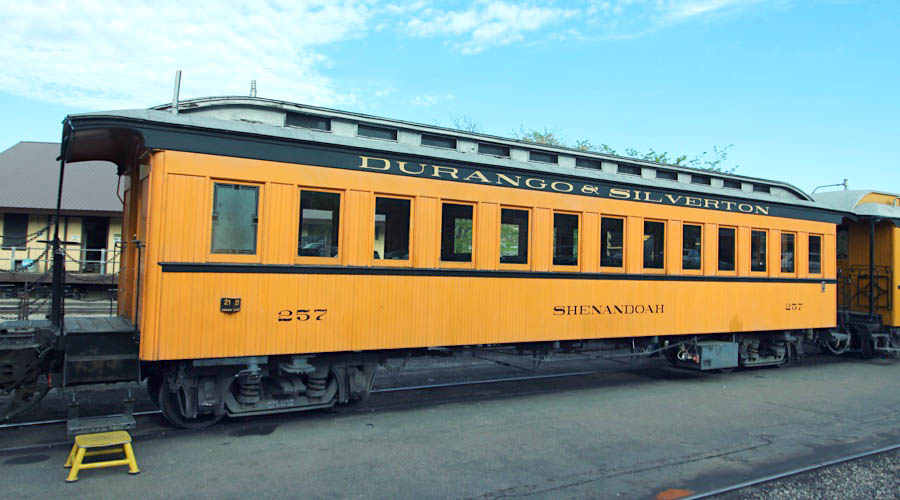
Durango & Silverton #257 "Shenandoah"
Durango, Co / May 2023 / RWH

Durango, Co / May 2023 / RWH

Silverton, Co / May 2023 / RWH
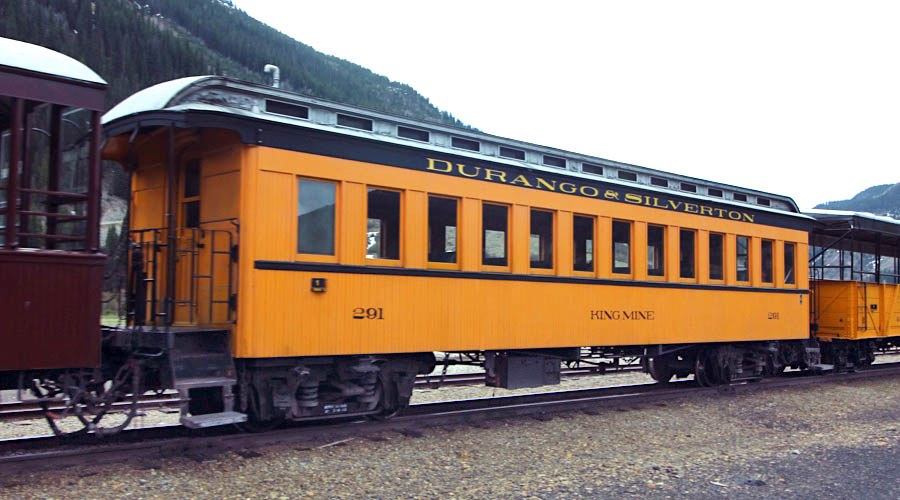
Durango & Silverton #291 "King Mine"
Silverton, Co / May 2023 / RWH

Silverton, Co / May 2023 / RWH
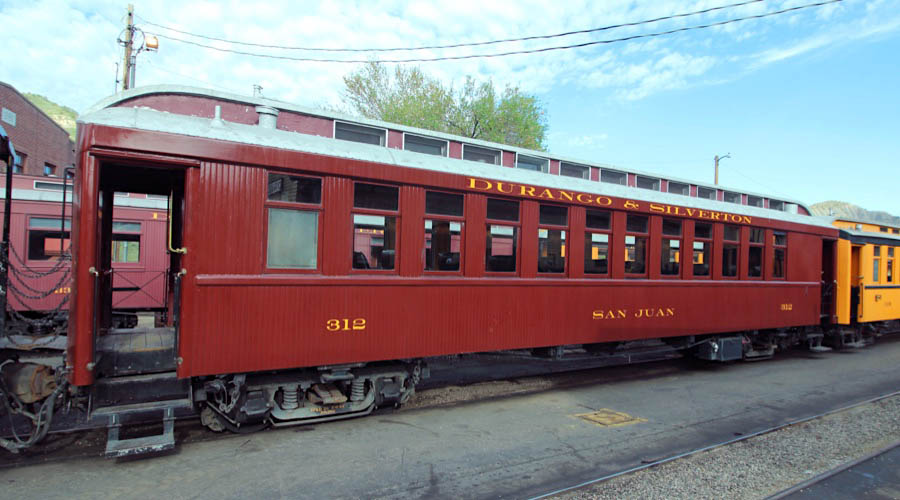
Durango & Silverton #312 "San Juan"
premium coach / Durango, Co / May 2023 / RWH
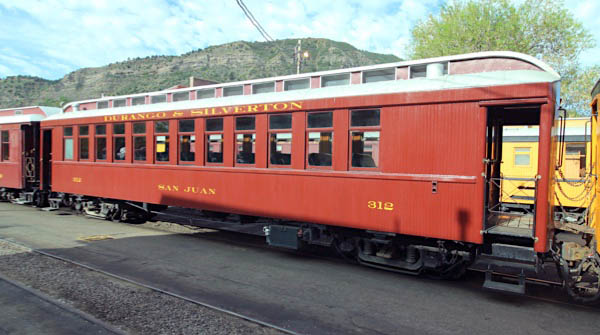
Durango, Co / May 2023 / RWH

Silverton, Co / May 2023 / RWH
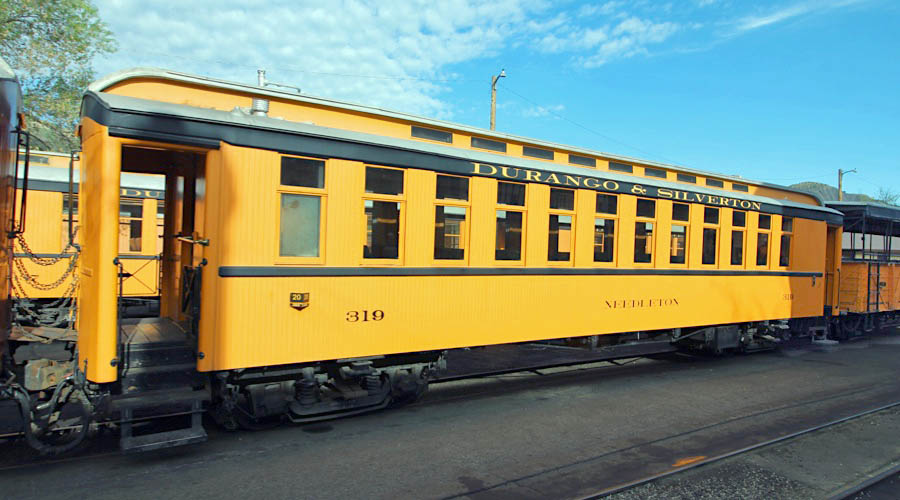
Durango & Silverton #319 "Needleton"
Durango, Co / May 2023 / RWH
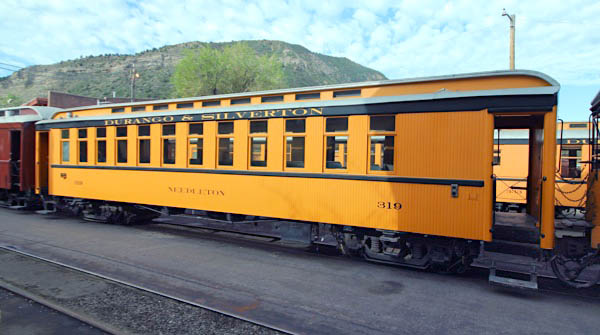
Durango, Co / May 2023 / RWH

Silverton, Co / May 2023 / RWH

 oaches 330, 331, 332, 333, 334, 335, 336 and 337 are slightly different than the others, being constructed of steel with sides scribed to represent wood. They were built by the D&RGW at the Burnham Shops in Denver. Numbers 330 and 331 were built in 1963, being the first new narrow gauge cars to be built in the U.S. since the early 1900's. The remainder of the cars were built in 1964. Except for the steel sides and aluminum window frames, they follow the specifications of the older cars very closely. The end platforms are fitted with end posts and ornate guard railings, which, as shown in the photos on page 99, are slightly different from those on older coaches. The cars are heated by coal stoves. The trucks on 330 and 331 are old-timers taken from former Railway Post Office cars X66 and X122. The floors are rubber and pneumatic tile and the seats are the ubiquitous tramway variety. In 1982 the masonite paneling below the windows was removed by the D&SNG, insulation was installed and oak paneling substituted. The cars are all electrically lighted.
oaches 330, 331, 332, 333, 334, 335, 336 and 337 are slightly different than the others, being constructed of steel with sides scribed to represent wood. They were built by the D&RGW at the Burnham Shops in Denver. Numbers 330 and 331 were built in 1963, being the first new narrow gauge cars to be built in the U.S. since the early 1900's. The remainder of the cars were built in 1964. Except for the steel sides and aluminum window frames, they follow the specifications of the older cars very closely. The end platforms are fitted with end posts and ornate guard railings, which, as shown in the photos on page 99, are slightly different from those on older coaches. The cars are heated by coal stoves. The trucks on 330 and 331 are old-timers taken from former Railway Post Office cars X66 and X122. The floors are rubber and pneumatic tile and the seats are the ubiquitous tramway variety. In 1982 the masonite paneling below the windows was removed by the D&SNG, insulation was installed and oak paneling substituted. The cars are all electrically lighted.
Doris B. Osterwald / Cinders & Smoke: A Guide to the D&SNRG / 1988
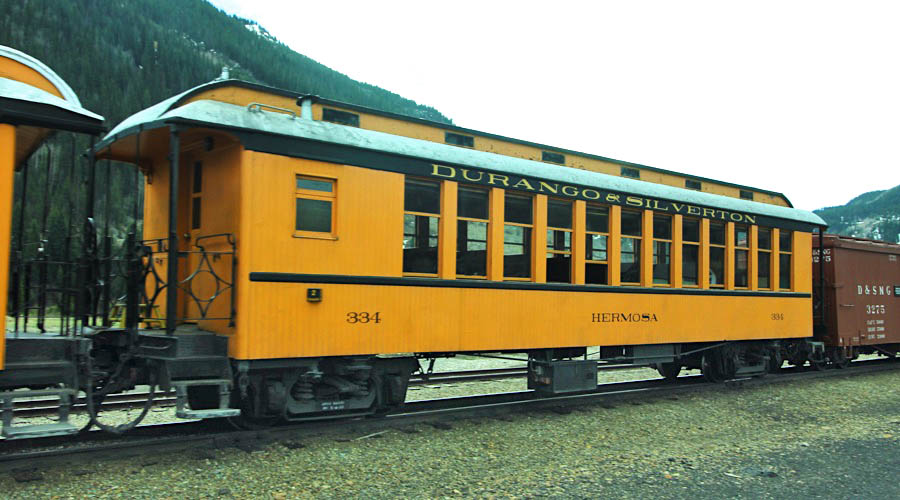
Durango & Silverton #334 "Hermosa"
Silverton, Co / May 2023 / RWH

Silverton, Co / May 2023 / RWH
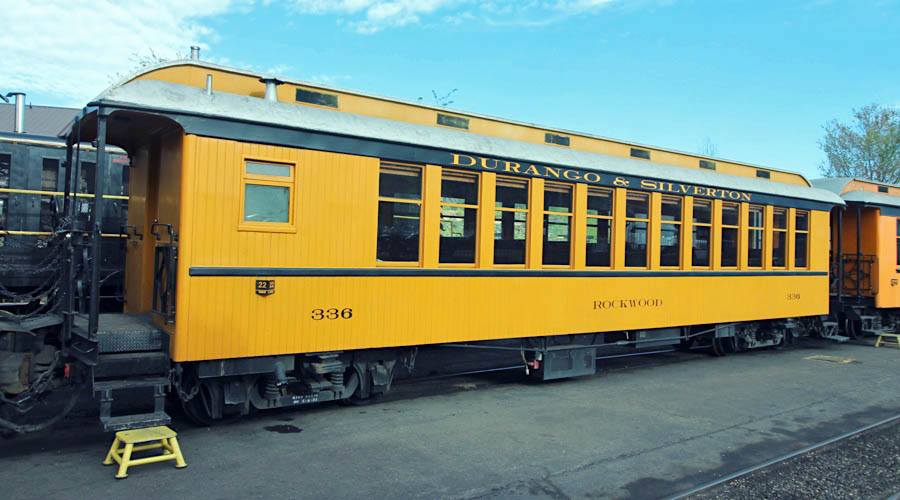
Durango & Silverton #336 "Rockwood"
Durango, Co / May 2023 / RWH
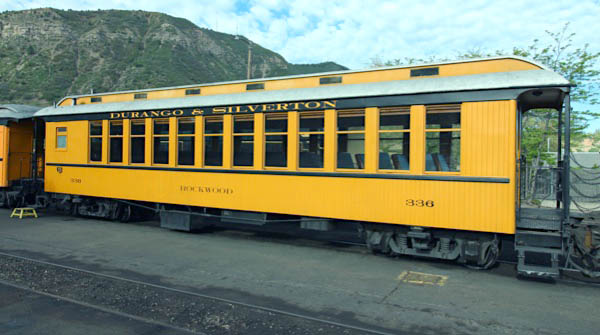
Durango, Co / May 2023 / RWH

Silverton, Co / May 2023 / RWH

Durango & Silverton #631 "Tall Timber"
premium coach / Silverton, Co / May 2023 / RWH

Silverton, Co / May 2023 / RWH
 Glass-top Cars
Glass-top Cars
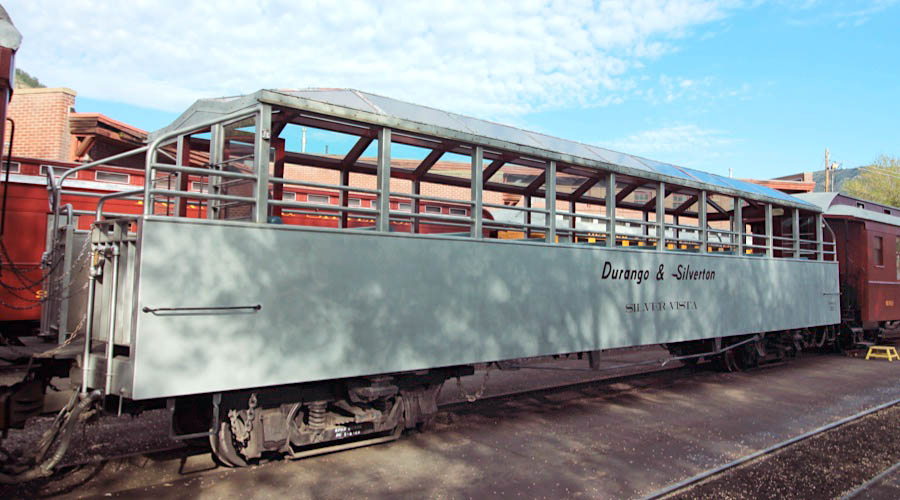
Durango & Silverton #313
"Silver Vista"
Durango, Co / May 2023 / RWH
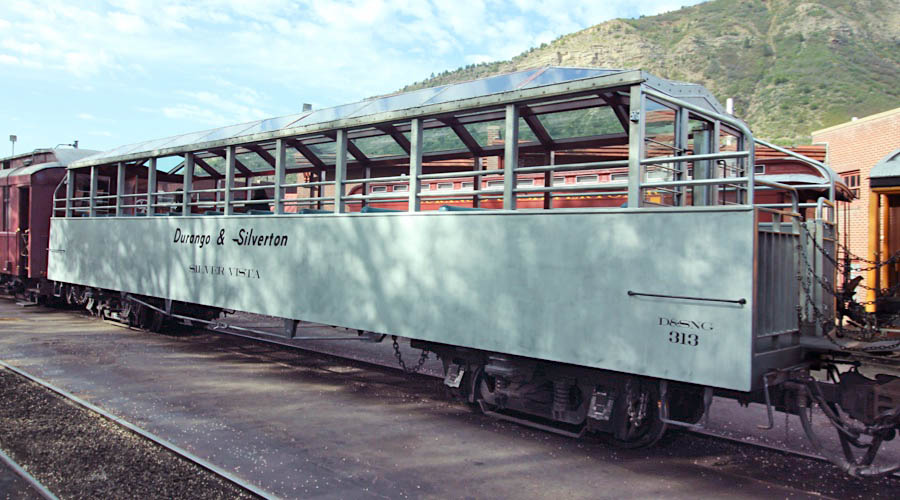
Durango, Co / May 2023 / RWH

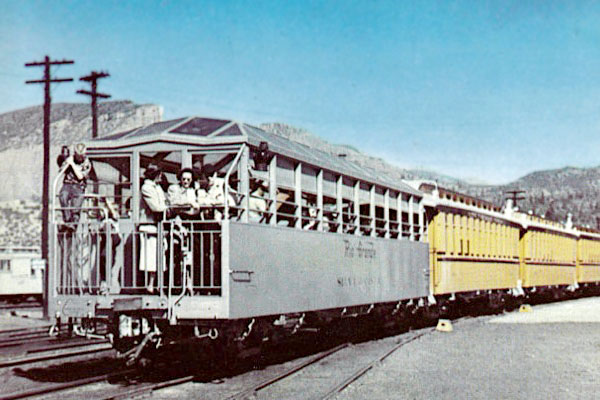 Durango & Silverton #313 is an open observation excursion car, carrying the name "Silver Vista." This car was built in 2006 by the railroad, based on the design of its predecessor "Silver Vista" built by the Denver & Rio Grande Western Railroad and operated on the Silverton Branch from 1947-53. That car was destroyed in a roundhouse fire in Alamosa, Colorado, and never replaced. Basically steel gondola design with coach seating, "Silver Vista" has a glass-panelled roof to protect riders from weather and locomotive cinders. The railroad monikers on each side pay homage to the D&RGW original, with their flying letter font.
Durango & Silverton #313 is an open observation excursion car, carrying the name "Silver Vista." This car was built in 2006 by the railroad, based on the design of its predecessor "Silver Vista" built by the Denver & Rio Grande Western Railroad and operated on the Silverton Branch from 1947-53. That car was destroyed in a roundhouse fire in Alamosa, Colorado, and never replaced. Basically steel gondola design with coach seating, "Silver Vista" has a glass-panelled roof to protect riders from weather and locomotive cinders. The railroad monikers on each side pay homage to the D&RGW original, with their flying letter font.

from Cinders & Smoke: A Guide to the D&SNRG
by Doris Osterwald - 1986 / collection
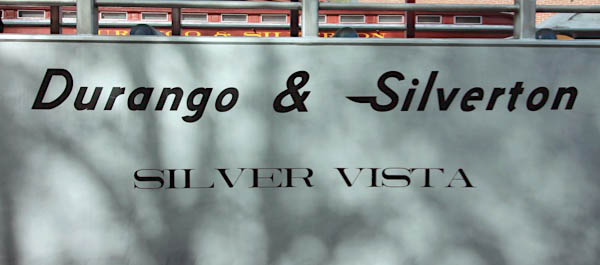
May 2023 / RWH
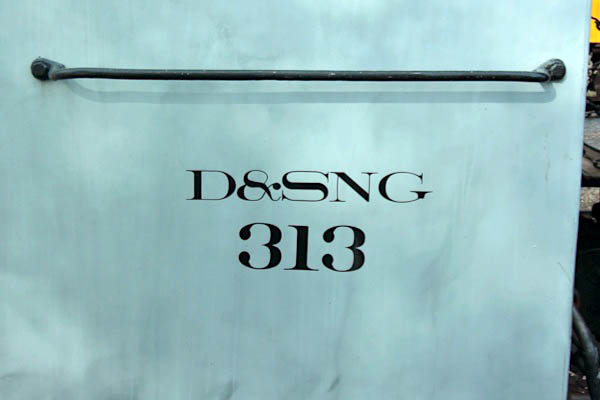
May 2023 / RWH
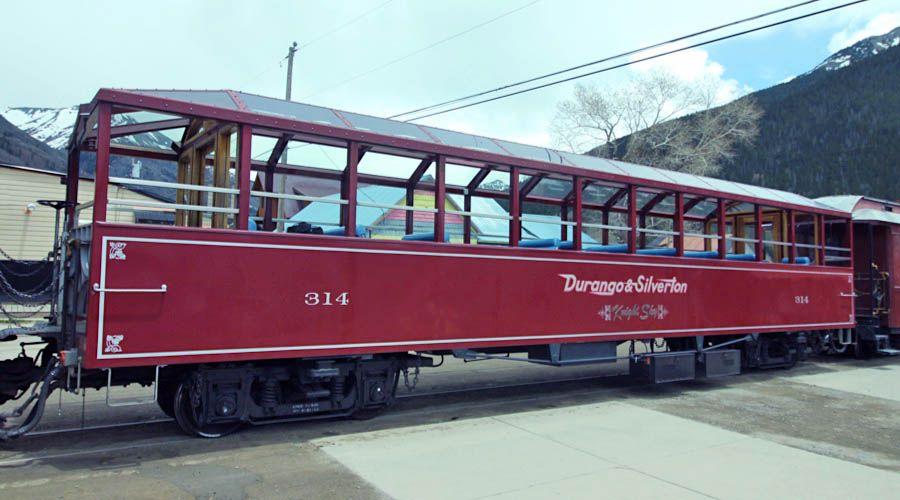
Durango & Silverton #314
"Knight Sky"
Silverton, Co / May 2023 / RWH

Silverton, Co / May 2023 / RWH

Durango & Silverton #314 is a second glass-topped open observation excursion car, carrying the name "Knight Sky." Similar in design as sister #313 (above), this car was built in 2012 by the railroad. In addition to the glass roof panels overhead, it has removable side windows which can be installed in colder operating seasons. The car wears the maroon colors applied to all the premium coaches and luxury cars.

May 2023 / RWH
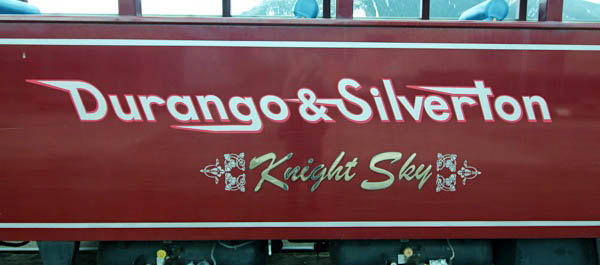
May 2023 / RWH
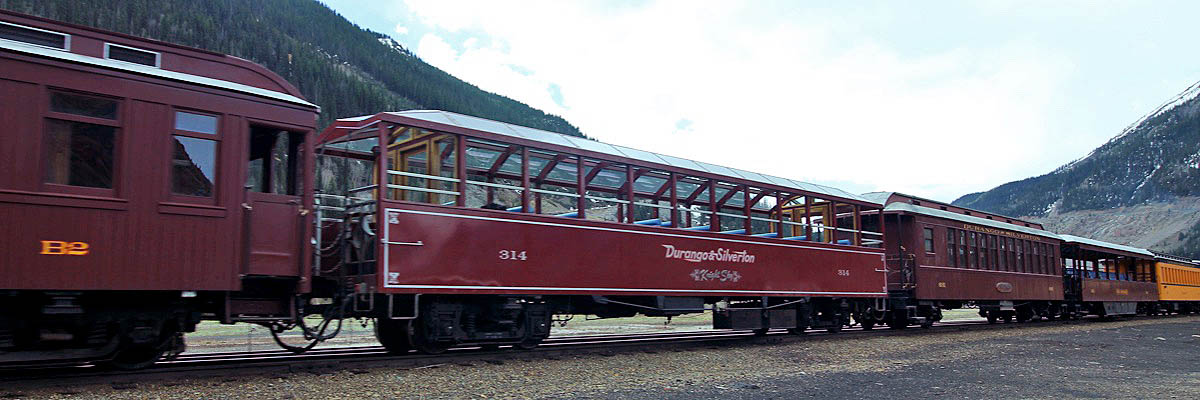
Silverton, Co / May 2023 / RWH

Silverton, Co / May 2023 / RWH
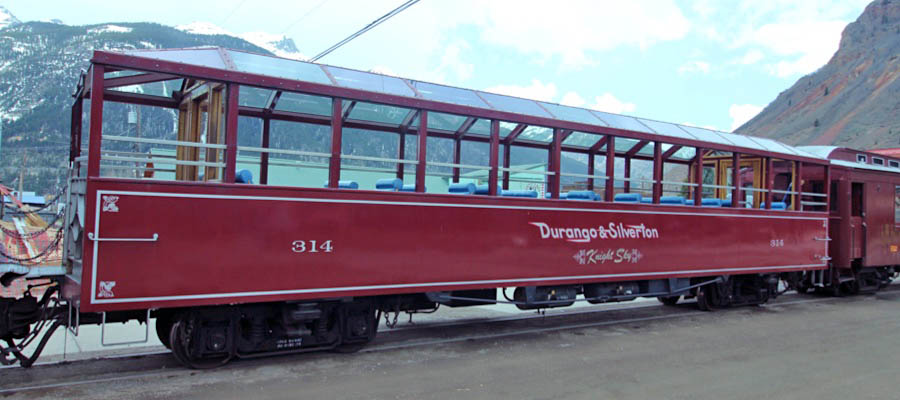
Silverton, Co / May 2023 / RWH
Parlor Cars
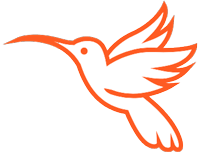
 UNCOMMON or UNUSUAL rolling stock
UNCOMMON or UNUSUAL rolling stock
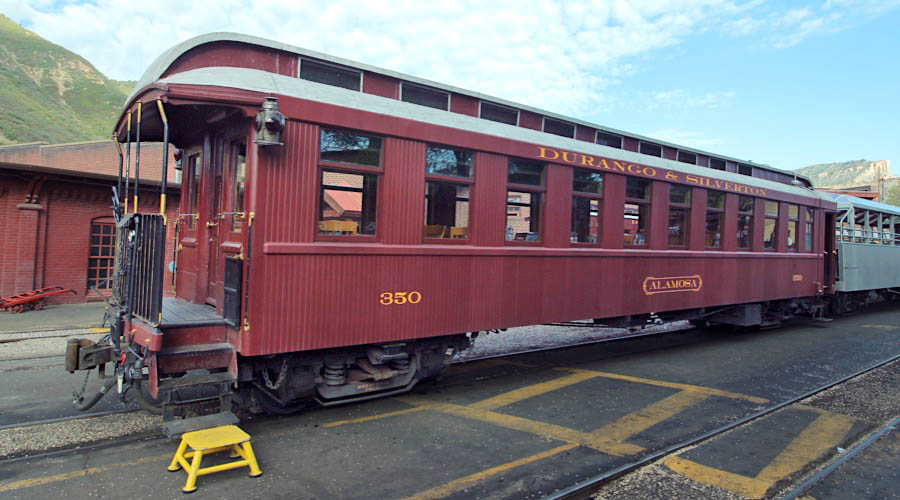
Durango & Silverton #350 "Alamosa"
parlor car / Durango, Co / May 2023 / RWH


 ar 350 had an extremely varied career. The car was built in 1880 by Jackson and Sharp as Horton chair car number 25, carrying the name "Hidalgo," which reflected the original Rio Grande management's interest in a rail connection with Mexico. At that time the car seated 25 people. It was changed to chair car 403 in 1885. In 1919 it was rebuilt into an office and living car for members of the Valuation Survey who were inventorying the entire railroad property after it was returned to private ownership tollow-ing World War I. The car was lowered and the wheels changed to 26-inch in 1924 when it was converted into a parlor-smoker car. After another rebuilding in 1937 it emerged as a parlor-buffet car named "Alamosa" (with no number) to replace the original "Alamosa" which was destroyed by fire in a derailment on the Rio Grande Southern in 1912. When rebuilt, the car had a closed front vestibule, ash interior, steam heat, electric lights, kitchen and buffet and swivelled, overstuffed seats for 14 passengers for service on the San Juan. In 1957 the kitchen and buffet were removed and the car converted to a coach for service on the Silverton. It was renumbered 350 in 1959, and was rebuilt with steel siding at Burnham in 1978. The name "Alamosa" was restored soon after the railroad was acquired by the new railroad. It is carpeted and equipped with electric lights. As an extra fare car, it is a regular part of trains 261 and 262 (Cascade Canyon Mixed) which operate from Durango to Cascade Canyon wye, as well as trains 115 and 116, the revived San Juan Express to Silverton.
ar 350 had an extremely varied career. The car was built in 1880 by Jackson and Sharp as Horton chair car number 25, carrying the name "Hidalgo," which reflected the original Rio Grande management's interest in a rail connection with Mexico. At that time the car seated 25 people. It was changed to chair car 403 in 1885. In 1919 it was rebuilt into an office and living car for members of the Valuation Survey who were inventorying the entire railroad property after it was returned to private ownership tollow-ing World War I. The car was lowered and the wheels changed to 26-inch in 1924 when it was converted into a parlor-smoker car. After another rebuilding in 1937 it emerged as a parlor-buffet car named "Alamosa" (with no number) to replace the original "Alamosa" which was destroyed by fire in a derailment on the Rio Grande Southern in 1912. When rebuilt, the car had a closed front vestibule, ash interior, steam heat, electric lights, kitchen and buffet and swivelled, overstuffed seats for 14 passengers for service on the San Juan. In 1957 the kitchen and buffet were removed and the car converted to a coach for service on the Silverton. It was renumbered 350 in 1959, and was rebuilt with steel siding at Burnham in 1978. The name "Alamosa" was restored soon after the railroad was acquired by the new railroad. It is carpeted and equipped with electric lights. As an extra fare car, it is a regular part of trains 261 and 262 (Cascade Canyon Mixed) which operate from Durango to Cascade Canyon wye, as well as trains 115 and 116, the revived San Juan Express to Silverton.
Doris B. Osterwald / Cinders & Smoke:
A Guide to the D&SNRG / 1988
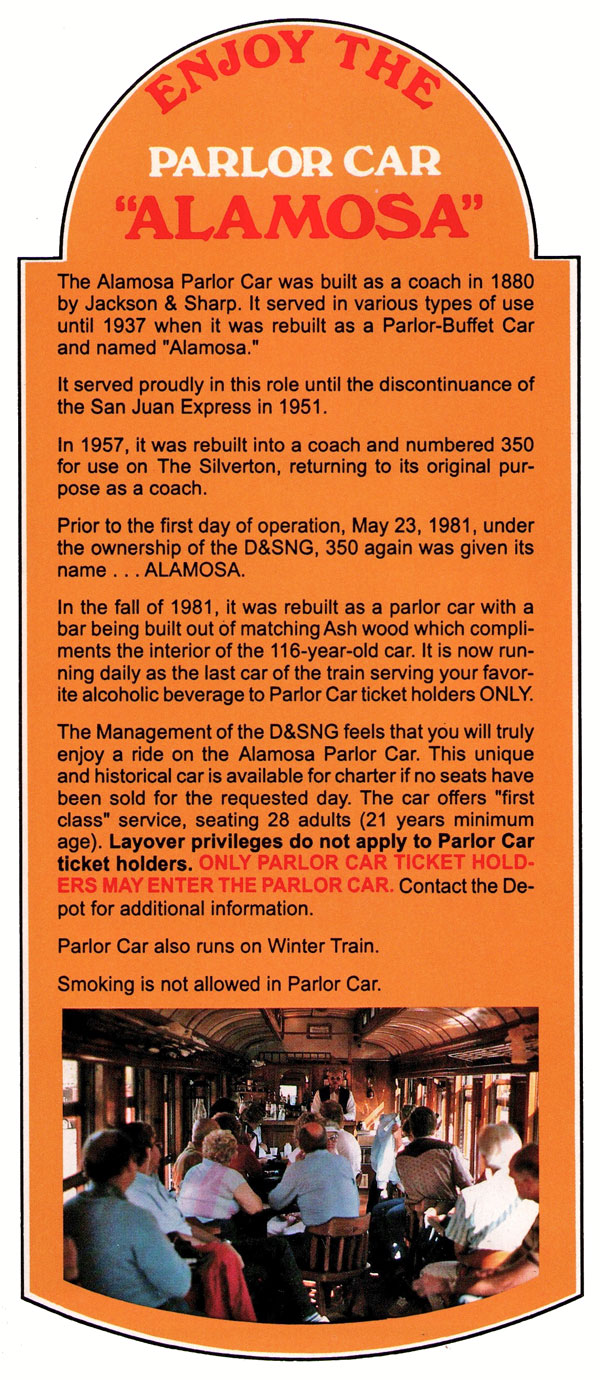
collection

from Narrow Gauge in the Rockies by Lucius Beebe & Charles Clegg - 1958
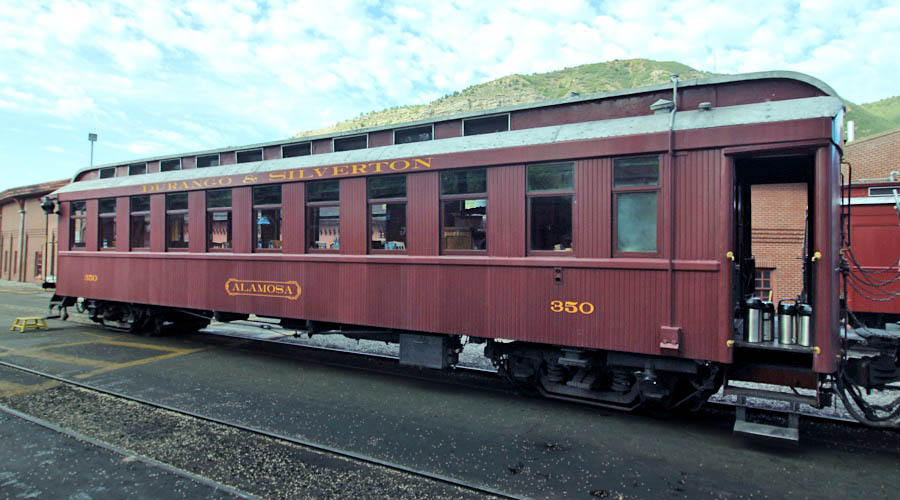
Durango, Co / May 2023 / RWH
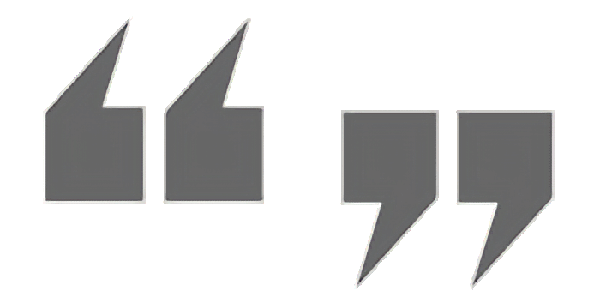
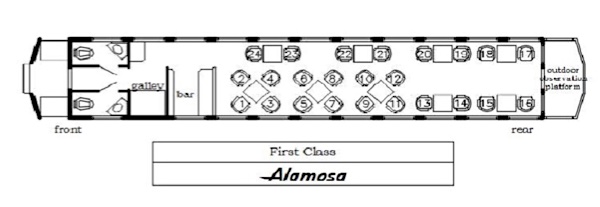
 uilt in 1881, the renowned Alamosa Parlor Car features table and chair lounge-style seating. An exclusive outdoor viewing platform is available to this car’s 24 passengers.
uilt in 1881, the renowned Alamosa Parlor Car features table and chair lounge-style seating. An exclusive outdoor viewing platform is available to this car’s 24 passengers.
 Then and Now
Then and Now
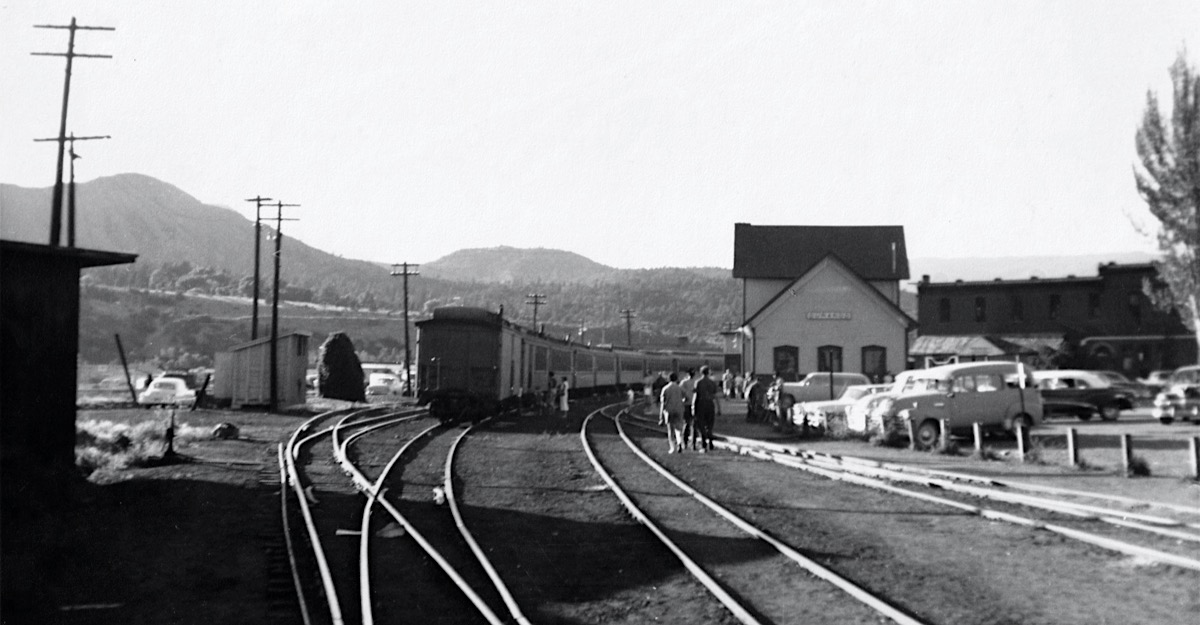
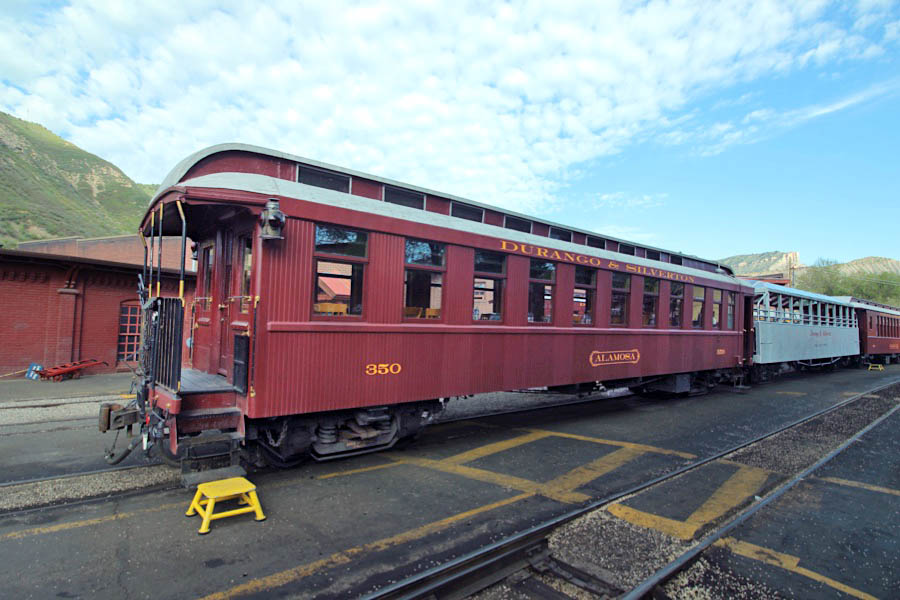
Durango, Co / Jun 1959 and May 2023 / JCH and RWH
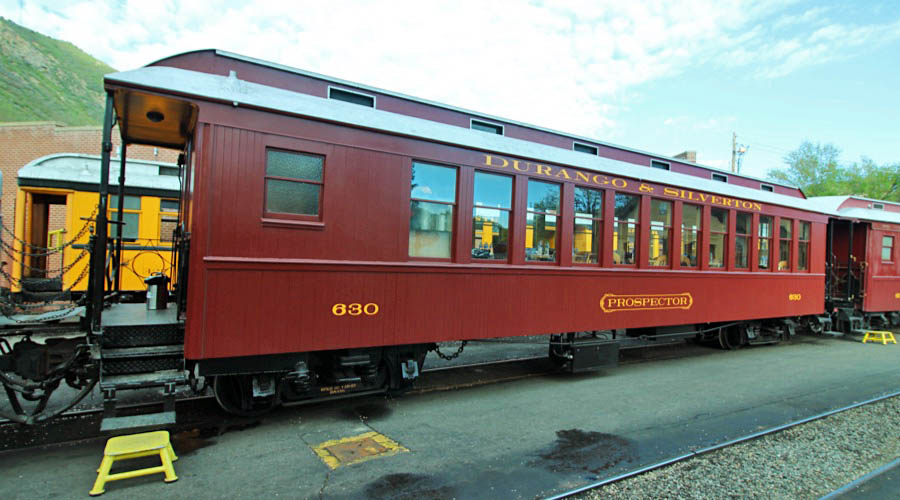
Durango & Silverton #630 "Prospector"
table car / Durango, Co / May 2023 / RWH

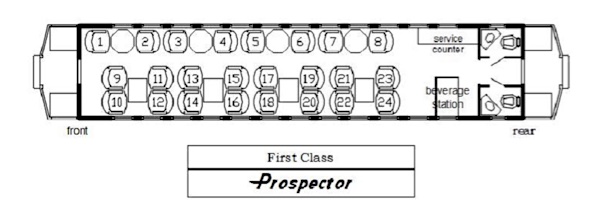
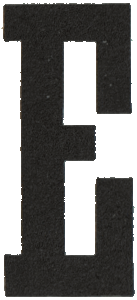 njoy the comfort and atmosphere of an upscale coach onboard the Prospector. This car features comfortable table and chair style seating and is staffed with an attendant to assist with passenger needs and questions. The ceiling of the car is an enlarged route map, making it easy for passengers to follow the train’s progress along the route.
njoy the comfort and atmosphere of an upscale coach onboard the Prospector. This car features comfortable table and chair style seating and is staffed with an attendant to assist with passenger needs and questions. The ceiling of the car is an enlarged route map, making it easy for passengers to follow the train’s progress along the route.
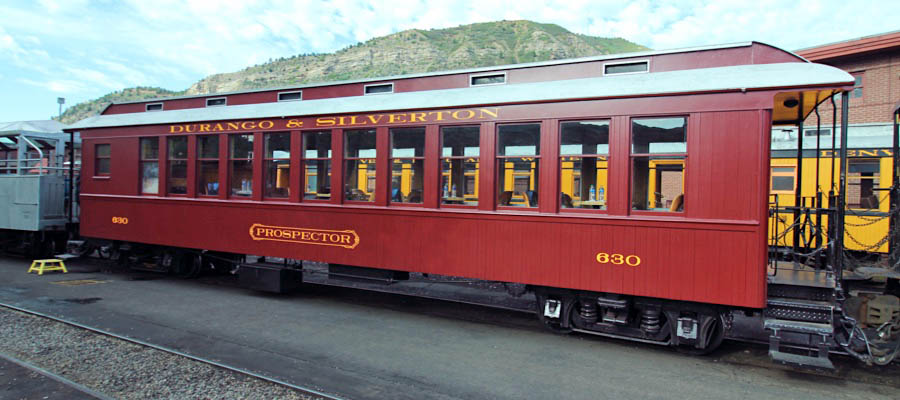
Durango, Co / May 2023 / RWH

Durango & Silverton #632
"Red Mountain"
table car / Durango, Co / May 2023 / RWH

Durango, Co / May 2023 / RWH

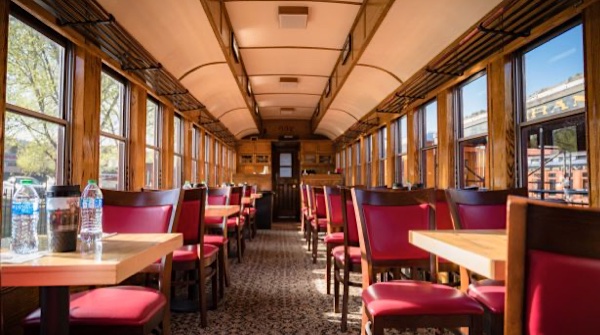
 njoy the comfort and atmosphere of an upscale coach onboard the Red Mountain. This car features comfortable table and chair style seating and is staffed with an attendant to assist with passenger needs and questions.
njoy the comfort and atmosphere of an upscale coach onboard the Red Mountain. This car features comfortable table and chair style seating and is staffed with an attendant to assist with passenger needs and questions.
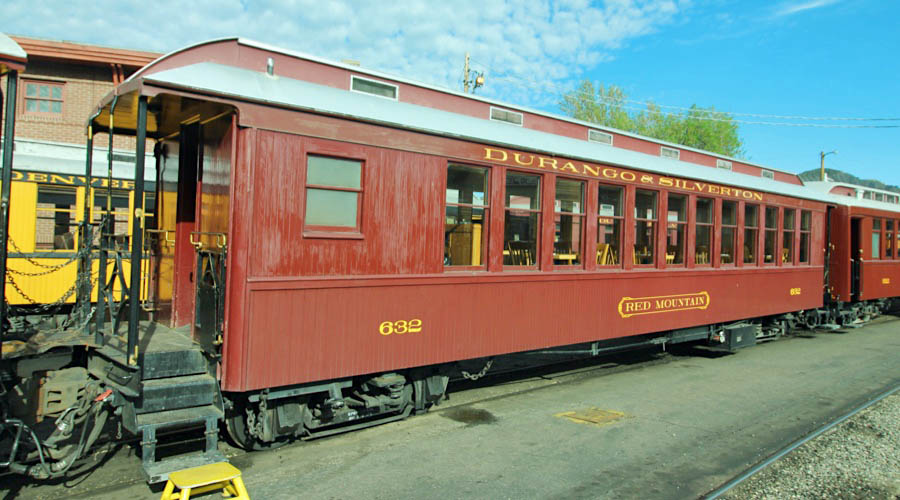
Durango, Co / May 2023 / RWH
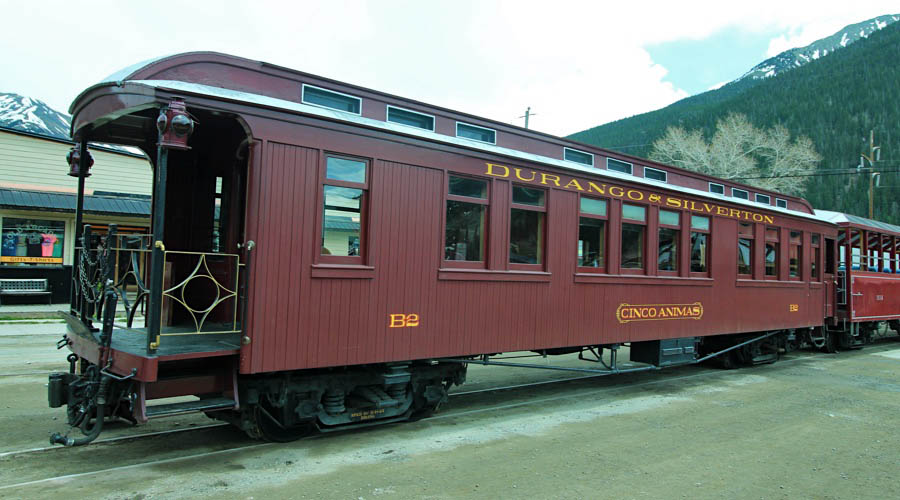
Durango & Silverton #B2
"Cinco Animas"
parlor car / Silverton, Co / May 2023 / RWH

 he "Cinco Animas" was built in 1883 by D&RG carmen in Denver at the Burnham Shop as an emigrant sleeper, numbered 103. Emigrant sleepers on the narrow gauge had odd configurations internally, with 30 seats below and berths above. Sometime later it was renumbered 452, still as an emigrant sleeper. By 1904, 452 (ex-103) was redesignated as a tourist car, possibly with the same internal configuration. Later it was renumbered 0452 for use as an outfit car. In 1909 outfit car 0452 was damaged in a wreck on the Rio Grande Southern Railroad. About the same time, a paycar, numbered "F" was also badly damaged in a wreck. Because the railroad employees needed to be paid as soon as possible, the 0452 carbody was refitted internally as a paycar and was placed on the running gear and other parts trom ex-paycar "F". When all the repairs were finished and the cars returned to service, the original 0452 had been numbered "F" and "F", which was outfitted with running gear from 0452, then became 0452. The original "F" carbody, now outfit car 0452, is on the Cumbres & Toltec Scenic Railroad at Chama, N.M.
he "Cinco Animas" was built in 1883 by D&RG carmen in Denver at the Burnham Shop as an emigrant sleeper, numbered 103. Emigrant sleepers on the narrow gauge had odd configurations internally, with 30 seats below and berths above. Sometime later it was renumbered 452, still as an emigrant sleeper. By 1904, 452 (ex-103) was redesignated as a tourist car, possibly with the same internal configuration. Later it was renumbered 0452 for use as an outfit car. In 1909 outfit car 0452 was damaged in a wreck on the Rio Grande Southern Railroad. About the same time, a paycar, numbered "F" was also badly damaged in a wreck. Because the railroad employees needed to be paid as soon as possible, the 0452 carbody was refitted internally as a paycar and was placed on the running gear and other parts trom ex-paycar "F". When all the repairs were finished and the cars returned to service, the original 0452 had been numbered "F" and "F", which was outfitted with running gear from 0452, then became 0452. The original "F" carbody, now outfit car 0452, is on the Cumbres & Toltec Scenic Railroad at Chama, N.M.
In 1913 car "F" (ex-0452) became B-5 and was used extensively on both the standard and narrow gauge lines of the D&RG by changing the trucks at Montrose, Colorado. The car was rebuilt again at the Burnham Shops in 1917 and renumbered B-2 to replace a car destroyed by fire during a derailment at Bell's Spur near Rockwood. It was then assigned to an official train. Vestibules were added to both ends about 1924 and 26-inch wheels replaced the 28-inch wheels in 1930. The car was sold by the D&RGW in 1954 and moved to Oklahoma. In 1963 the car was purchased by the Cinco Animas Corporation and returned to Colorado. At that time the vestibule was removed from the observation room end, an open platform with railings was added, and new Tuscan red paint was applied at the Burnham Shops. The car then received its present name, "Cinco Animas", for the five individuals who jointly purchased the car, and returned it to Durango. In 1982 the corporation sold the car to the DSNG; it is available for charter trips on the Silverton trains.
Doris B. Osterwald / Cinders & Smoke: A Guide to the D&SNRG / 1988
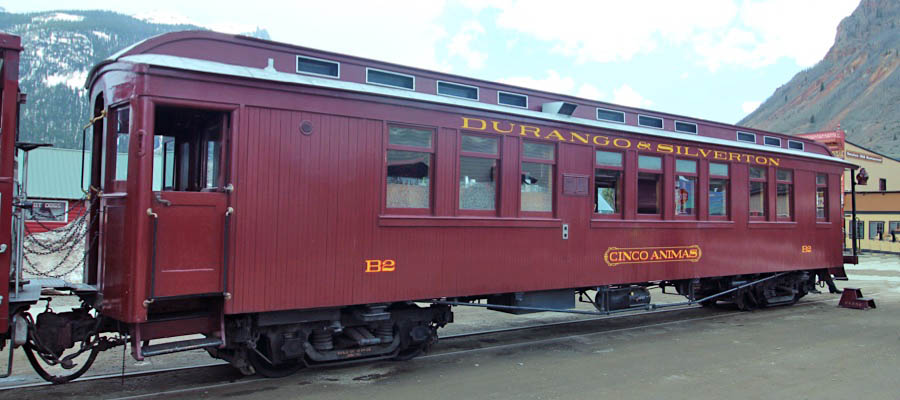
Silverton, Co / May 2023 / RWH


 he Cinco Animas offers two elegantly appointed seating areas. You may choose to relax in built-in Pullman berth seating, or enjoy the views out the rear from the Observation Parlor Room. A large outdoor viewing platform is exclusively available to those who choose this car.
he Cinco Animas offers two elegantly appointed seating areas. You may choose to relax in built-in Pullman berth seating, or enjoy the views out the rear from the Observation Parlor Room. A large outdoor viewing platform is exclusively available to those who choose this car.
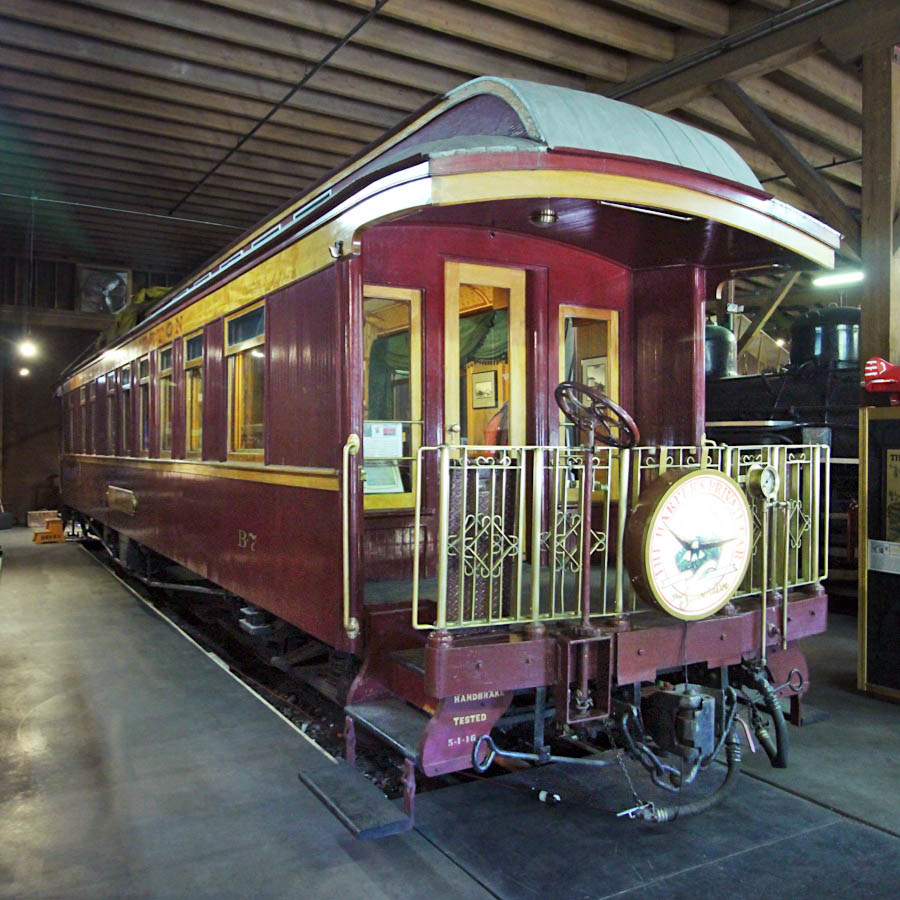
Durango & Silverton #B-7
"General Palmer"
business car / May 2023 / RWH
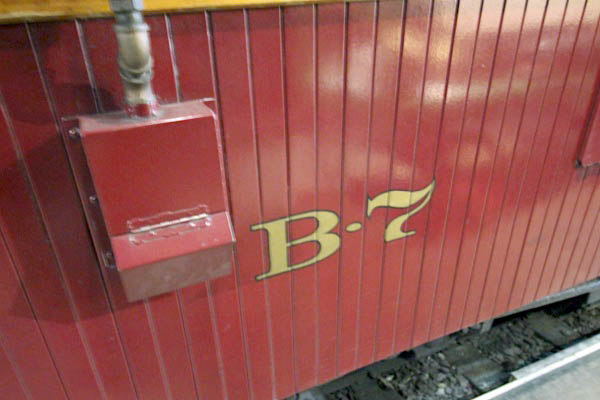
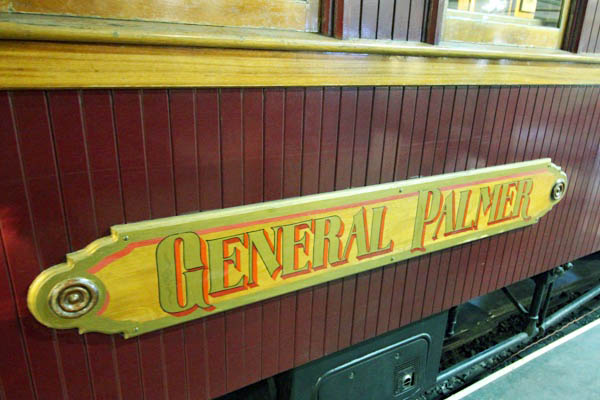
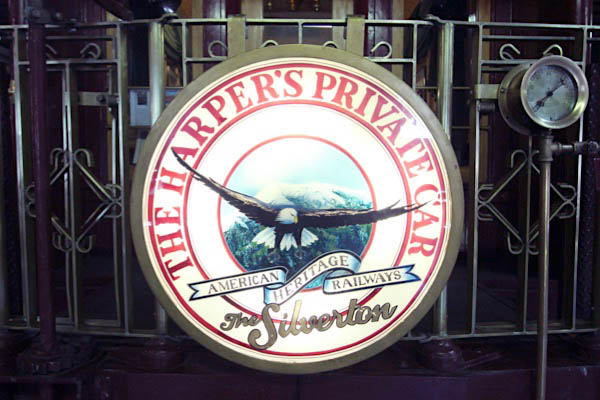
May 2023 / RWH


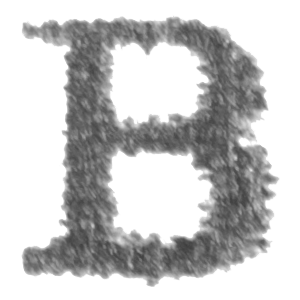 usiness Car B-7 was built in 1880 by the Burnham Shops of the D&RG as a flat-roofed baggage car, using ironwork from Billmeyer and Small at 1886. The car was lowered in 1930. In 1946 the B-7 and B-2 (now the "Cinco Animas") made a last official trip over the entire Rio Grande Southern Railroad with noted authors Lucius Beebe and Charles Clegg as guests. During still another rebuilding at the Burnham Shops in 1963, the underframe and trucks were modemized and strengthened, the kitchen was remodelled, a "Rio Grande Gold" paint job was added and the car renamed the "General William Jackson Palmer" in honor of the founder of the Denver and Rio Grande Railway, The car is now owned by the D&SNG and will be used as a business car when repaired. It also has the distinction of being the oldest business car owned and operated by any U.S. railroad.
usiness Car B-7 was built in 1880 by the Burnham Shops of the D&RG as a flat-roofed baggage car, using ironwork from Billmeyer and Small at 1886. The car was lowered in 1930. In 1946 the B-7 and B-2 (now the "Cinco Animas") made a last official trip over the entire Rio Grande Southern Railroad with noted authors Lucius Beebe and Charles Clegg as guests. During still another rebuilding at the Burnham Shops in 1963, the underframe and trucks were modemized and strengthened, the kitchen was remodelled, a "Rio Grande Gold" paint job was added and the car renamed the "General William Jackson Palmer" in honor of the founder of the Denver and Rio Grande Railway, The car is now owned by the D&SNG and will be used as a business car when repaired. It also has the distinction of being the oldest business car owned and operated by any U.S. railroad.
Doris B. Osterwald / Cinders & Smoke: A Guide to the D&SNRG / 1988

See also our Durango & Silverton Narrow Gauge Museum page for more B-7 images
Open Observation Cars


 pen observation cars 400, 401 and 402 were originally standard gauge D&GW boxcars 67191, 66665 and 66271. In 1953 these boxcars were converted into pipe cars Nos. 9609, 9611 and 9605 respectively, by cutting down and bracing the sides, removing the ends and adding narrow gauge trucks. As pipe cars they were used between Alamosa and Farmington, N.M. during the oil and gas boom of the 1950's in the San Juan Basin. The cars were converted into observation cars by equipping them with passenger car trucks, steel roofs, tile floors and tramway seats in 1963. Three additional open observation cars, 403, 404 and 405 were built in the Burnham Shops for the 1967 season of The Silverton. These were converted from pipe cars 9606, came from coaches 284, 306 and 320 which were sold to the Colorado Railroad Museum in Golden, Colorado. Open observation cars 411 and 412 were built between 1982 and 1985 by the Durango carshop of the D&SNG from pipe cars 9603 and 9608. Between 1982 and 1986, eleven new open observation cars were built by the D&SNG. Fourteen pairs of passenger trucks were built in 1983 for the new cars and also to replace worn sets on some of the older equipment. Look for the new D&SNG stamp on the sides.
pen observation cars 400, 401 and 402 were originally standard gauge D&GW boxcars 67191, 66665 and 66271. In 1953 these boxcars were converted into pipe cars Nos. 9609, 9611 and 9605 respectively, by cutting down and bracing the sides, removing the ends and adding narrow gauge trucks. As pipe cars they were used between Alamosa and Farmington, N.M. during the oil and gas boom of the 1950's in the San Juan Basin. The cars were converted into observation cars by equipping them with passenger car trucks, steel roofs, tile floors and tramway seats in 1963. Three additional open observation cars, 403, 404 and 405 were built in the Burnham Shops for the 1967 season of The Silverton. These were converted from pipe cars 9606, came from coaches 284, 306 and 320 which were sold to the Colorado Railroad Museum in Golden, Colorado. Open observation cars 411 and 412 were built between 1982 and 1985 by the Durango carshop of the D&SNG from pipe cars 9603 and 9608. Between 1982 and 1986, eleven new open observation cars were built by the D&SNG. Fourteen pairs of passenger trucks were built in 1983 for the new cars and also to replace worn sets on some of the older equipment. Look for the new D&SNG stamp on the sides.
Doris B. Osterwald / Cinders & Smoke: A Guide to the D&SNRG / 1988
image May 2023 / RWH
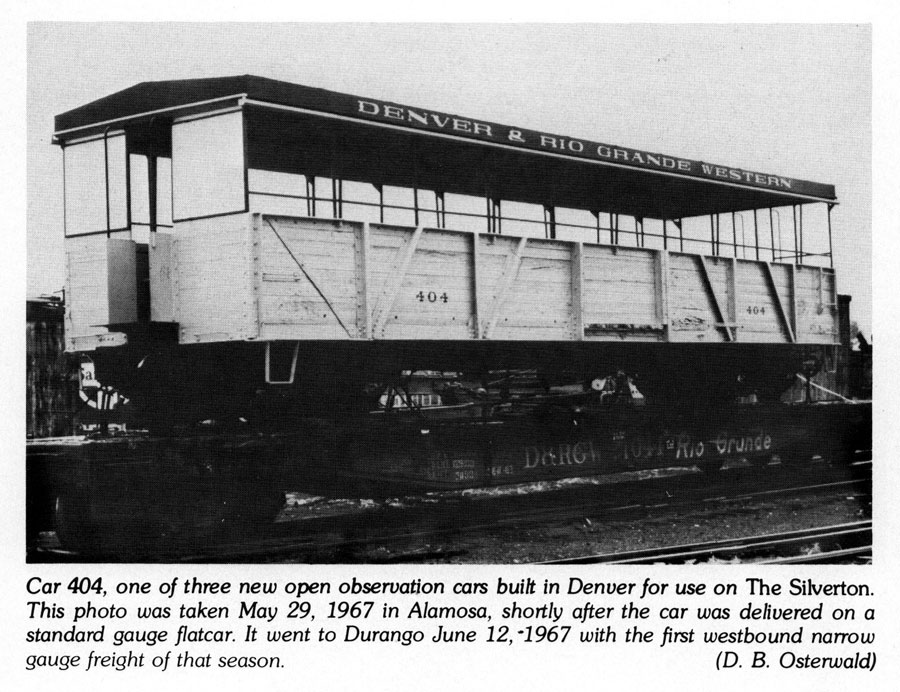
from Cinders & Smoke: A Guide to the D&SNRG
by Doris Osterwald - 1986 / collection
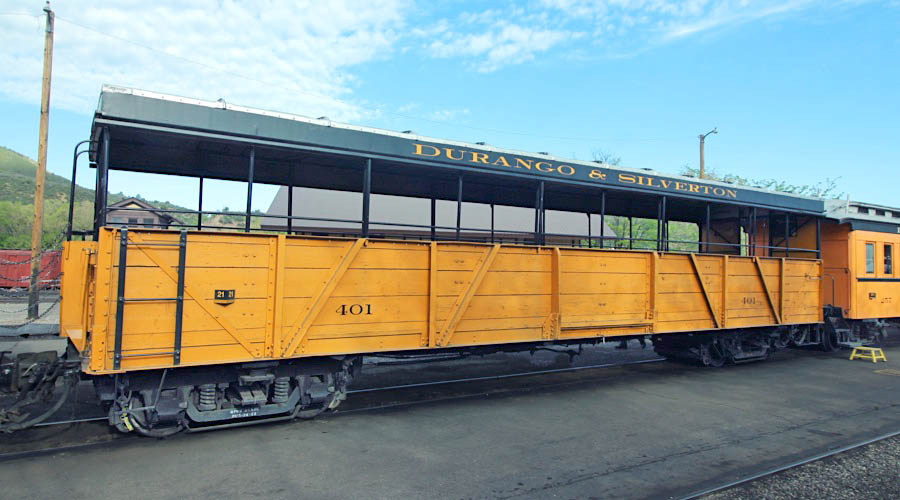
Durango & Silverton #401
Durango, Co / May 2023 / RWH

Durango, Co / May 2023 / RWH

Silverton, Co / May 2023 / RWH
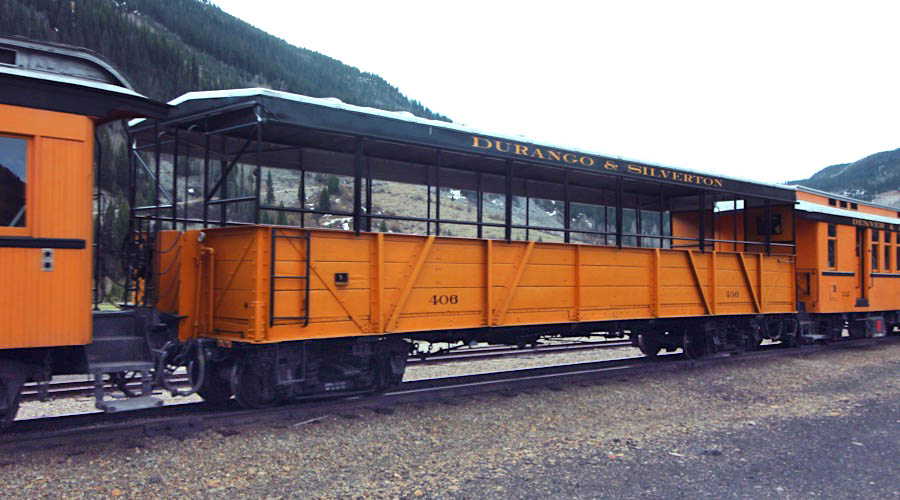
Durango & Silverton #406
Silverton, Co / May 2023 / RWH
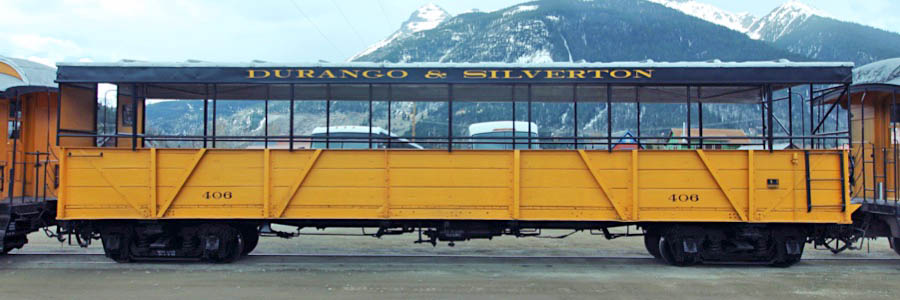
Silverton, Co / May 2023 / RWH

Durango & Silverton #407
Durango, Co / May 2023 / RWH
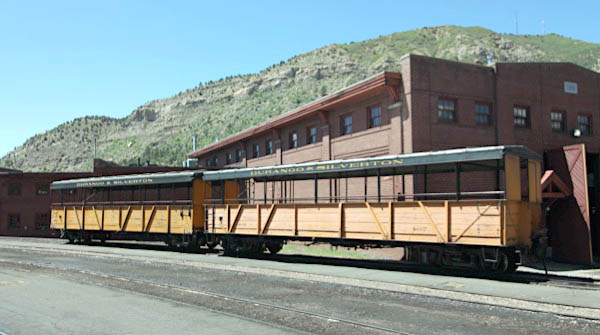
Durango, Co / May 2023 / RWH

Durango & Silverton #408
Durango, Co / May 2023 / RWH
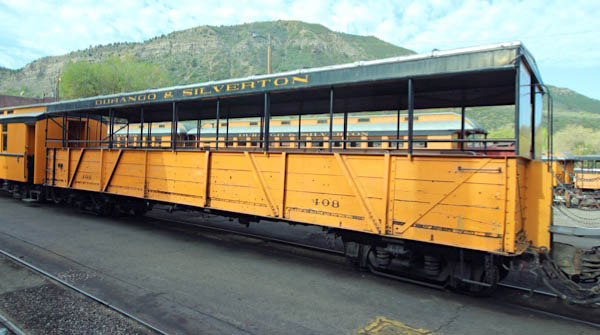
Durango, Co / May 2023 / RWH
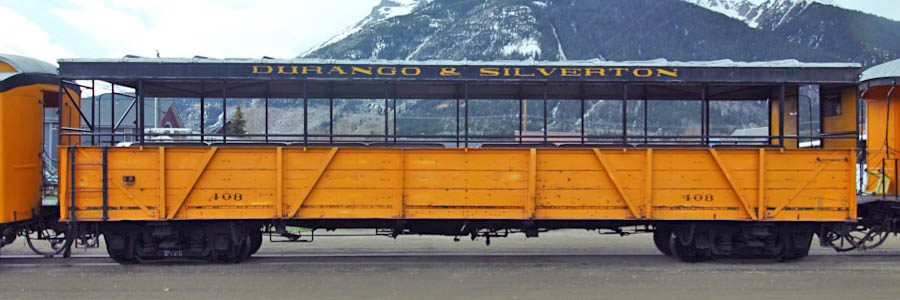
Silverton, Co / May 2023 / RWH
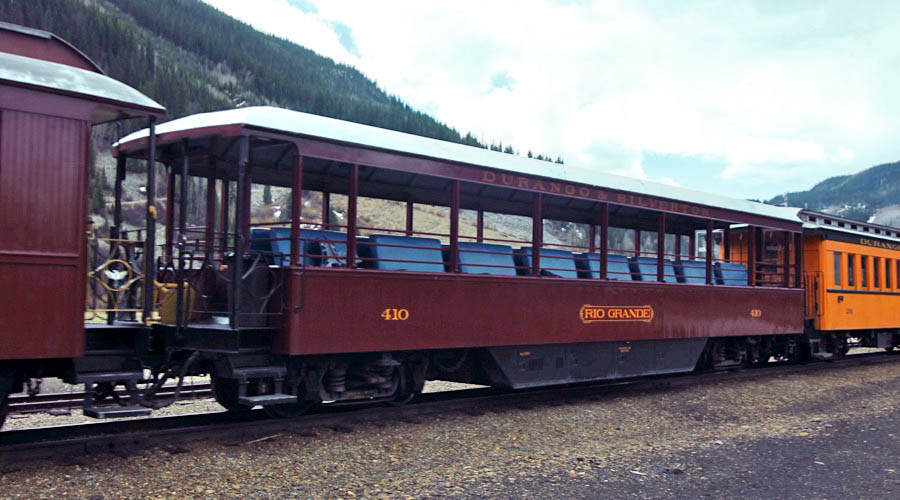
Durango & Silverton #410 "Rio Grande"
Silverton, Co / May 2023 / RWH
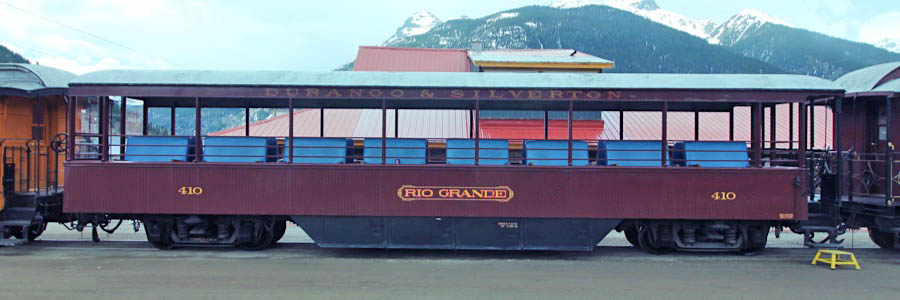
Silverton, Co / May 2023 / RWH
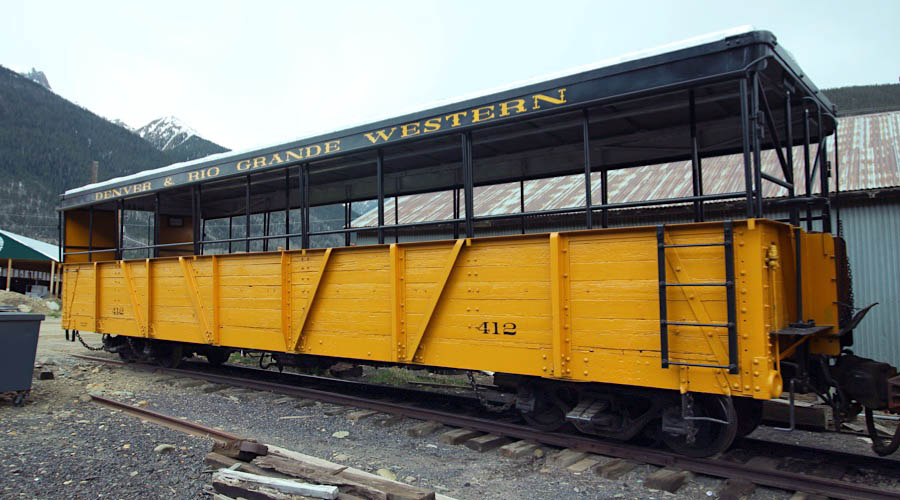
Durango & Silverton #412
Silverton, Co / May 2023 / RWH

Silverton, Co / May 2023 / RWH
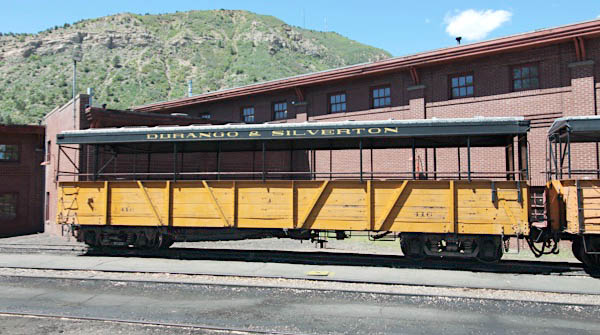
Durango & Silverton #416
Durango, Co / May 2023 / RWH

Durango, Co / May 2023 / RWH
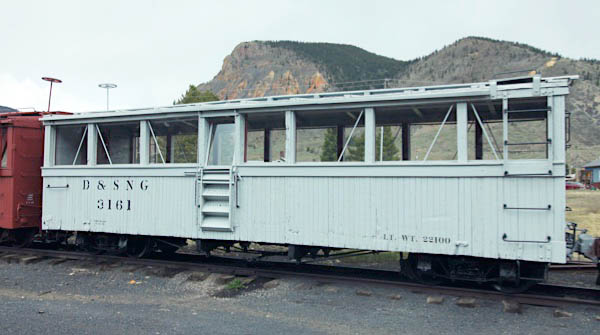
Durango & Silverton #3161
Silverton, Co / May 2023 / RWH
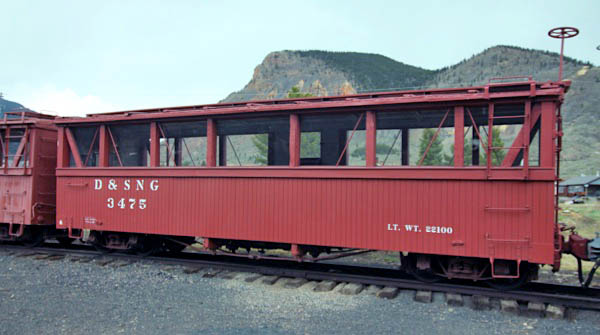
Durango & Silverton #3475
Silverton, Co / May 2023 / RWH
Miscellaneous
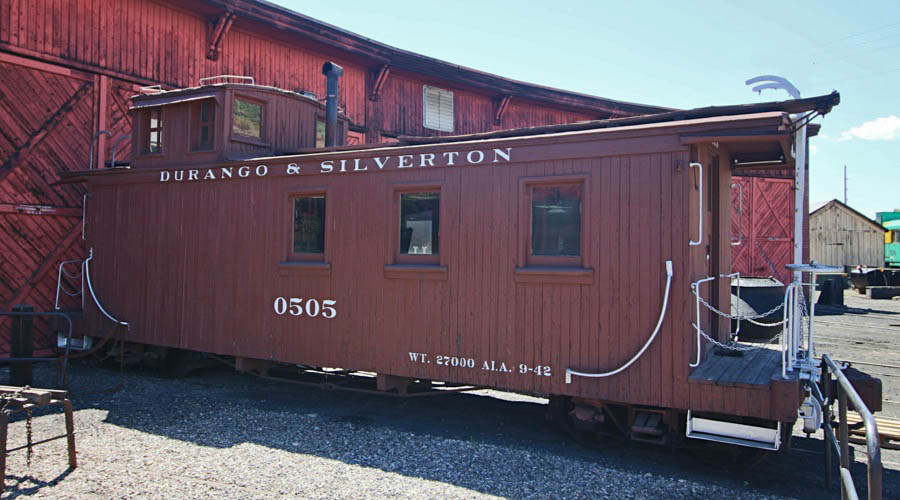
Durango & Silverton #0505
wooden caboose / Durango, Co / May 2023 / RWH
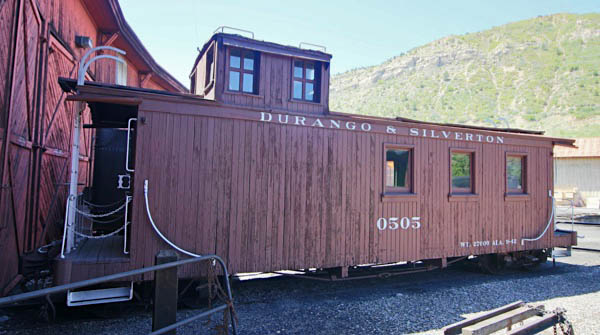
Durango, Co / May 2023 / RWH

Durango, Co / May 2023 / RWH
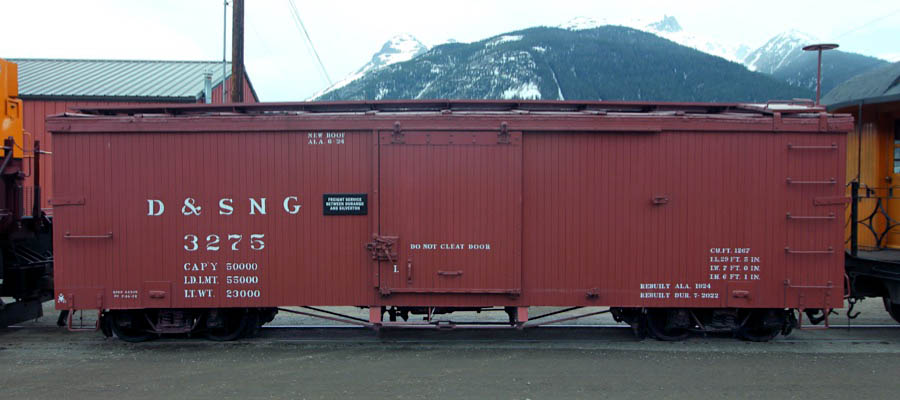
Durango & Silverton #3275
boxcar / Silverton, Co / May 2023 / RWH
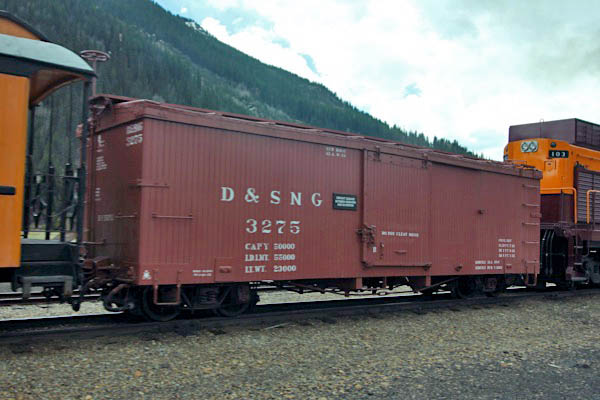
Silverton, Co / May 2023 / RWH
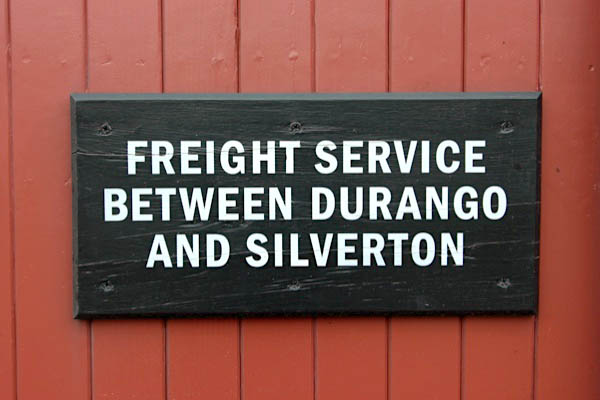
May 2023 / RWH

Durango & Silverton #3631
boxcar / Silverton, Co / May 2023 / RWH
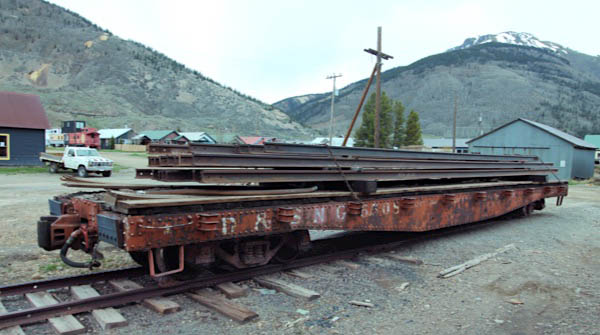
Durango & Silverton #6508
flatcar / Silverton, Co / May 2023 / RWH
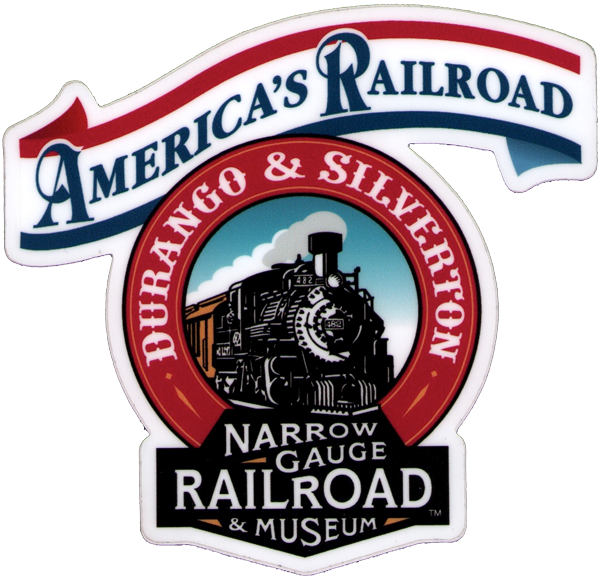

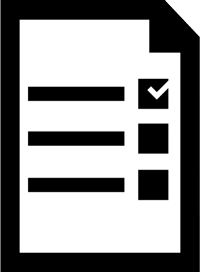 Durango & Silverton Narrow Gauge passenger car roster
Durango & Silverton Narrow Gauge passenger car roster

